The results from our 2018 Wildlife Portraits photo contest.
- Winner: Vladimir Cech Jr.
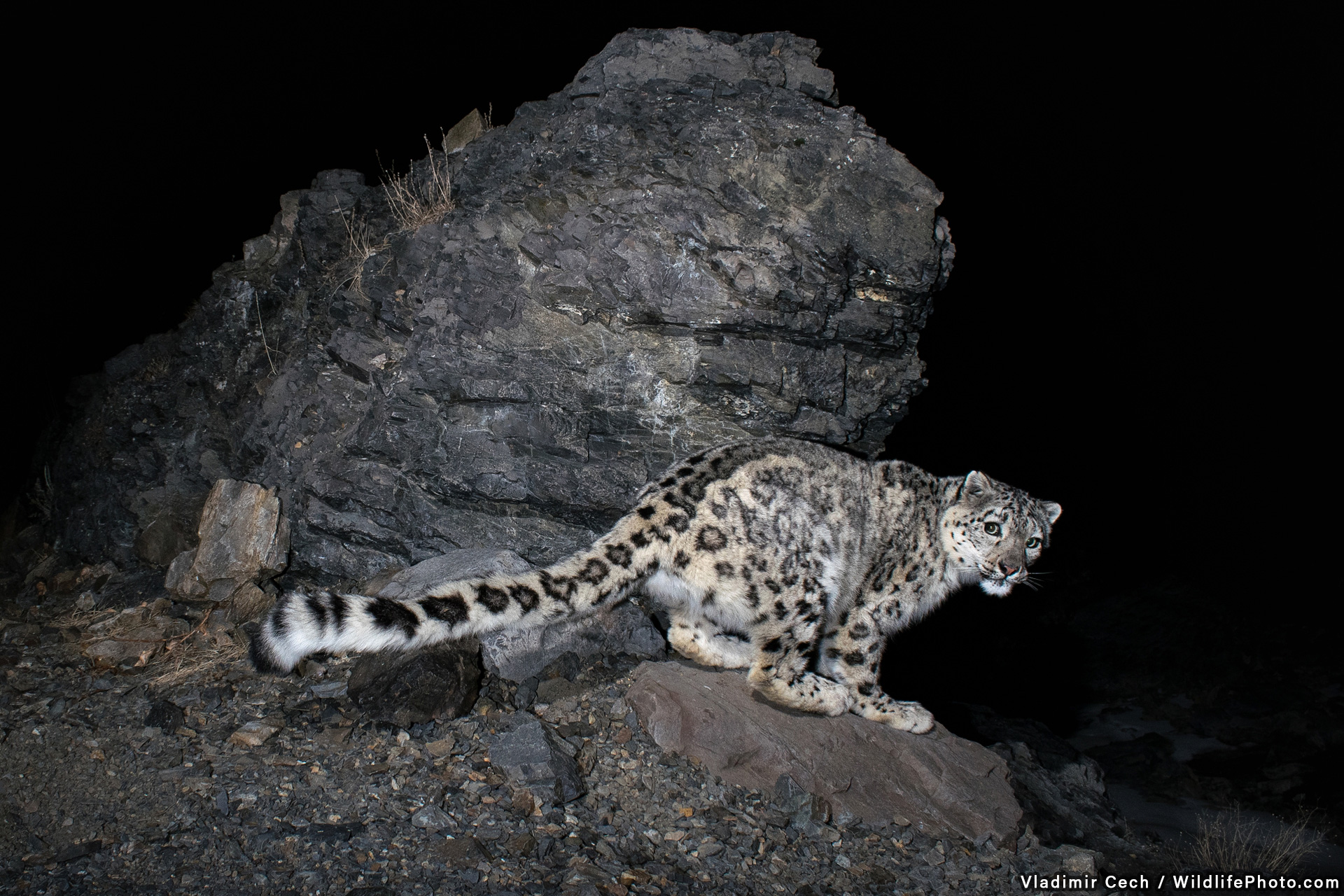
One moment of pure magic
From the first day in Mongolian mountains, I thought to myself, if it was not too much boldness from me to come there with the three home-knocked traps installed in plastic boxes from Ikea and claiming I had come for a picture of a creature, that even most of the locals have never seen and probably will not even see. If I speak Mongolian, I swore that they was little bit laughing. Exactly after three days in the field they did not laugh anymore...I did not either. It worked!
- Runner-Up: Pushpal Goswami
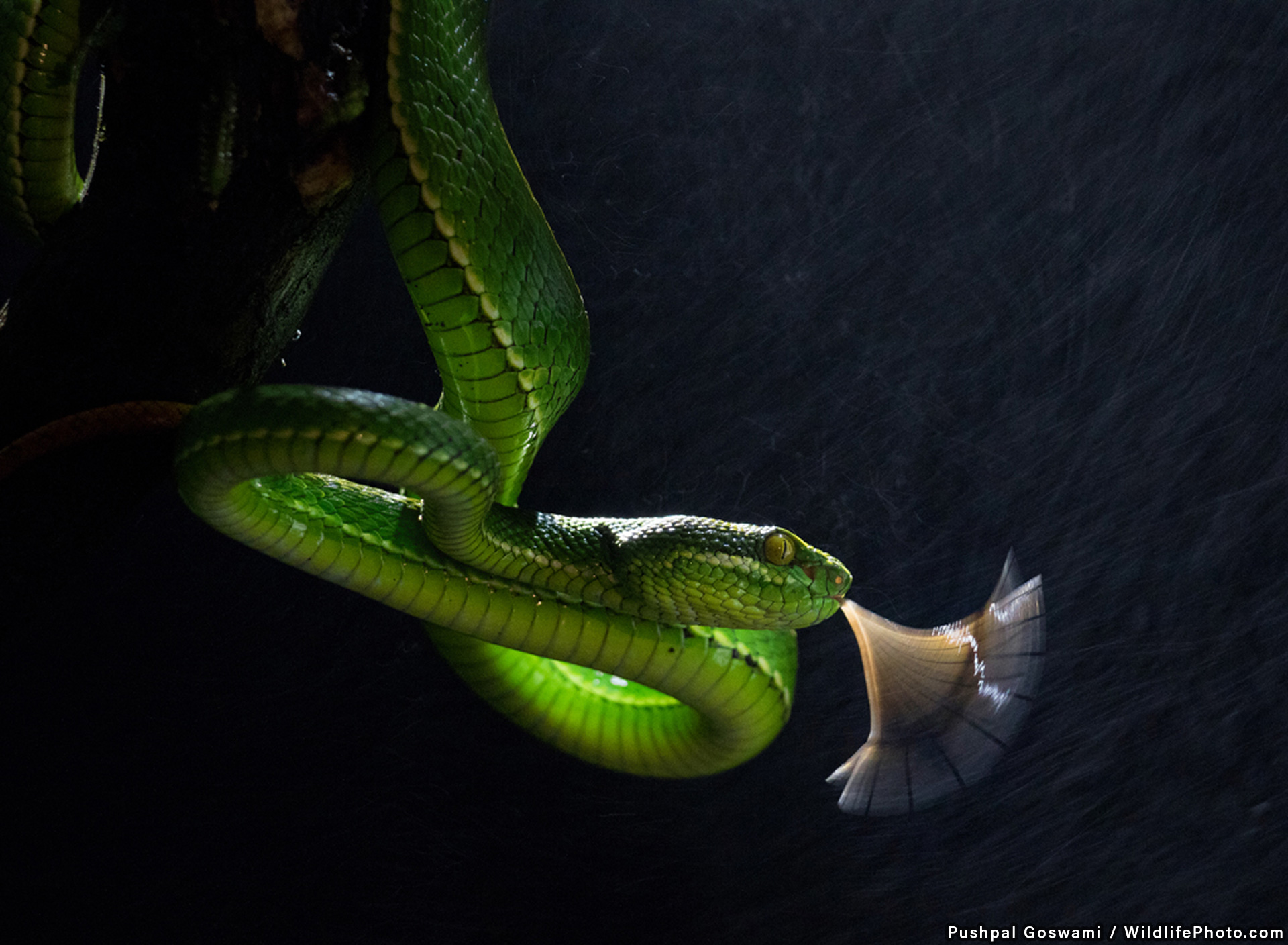
Flickering
I along with my friend went to Meghalaya, India last September,2017. On the second day of our trip we went in search of some nocturnal species. There suddenly we came across this Pit Viper. The species was on the tree perch beside the road waiting (may be) for its prey. We both were excited and planned to take some out of box shot of the said species. Photography at night requires a lot more depth and we gave our 100% to take the shot after spending a lot of time. Snakes generally pop out their tongue to sense their surrounding and I took the opportunity to make a shot with a bit drama in that. To add that drama, I had fired the external flash (Canon 430 EX II) from behind using trigger. I had used Canon EOS 7D Mark II , Canon EF-S 55-250mm and intentionally slower the shutter speed to capture this dramatic movement of the flickering tongue of the snake. A slight drizzle works well in anti-light condition and slow shutter speed.
- Runner-Up: Fabrizio Moglia
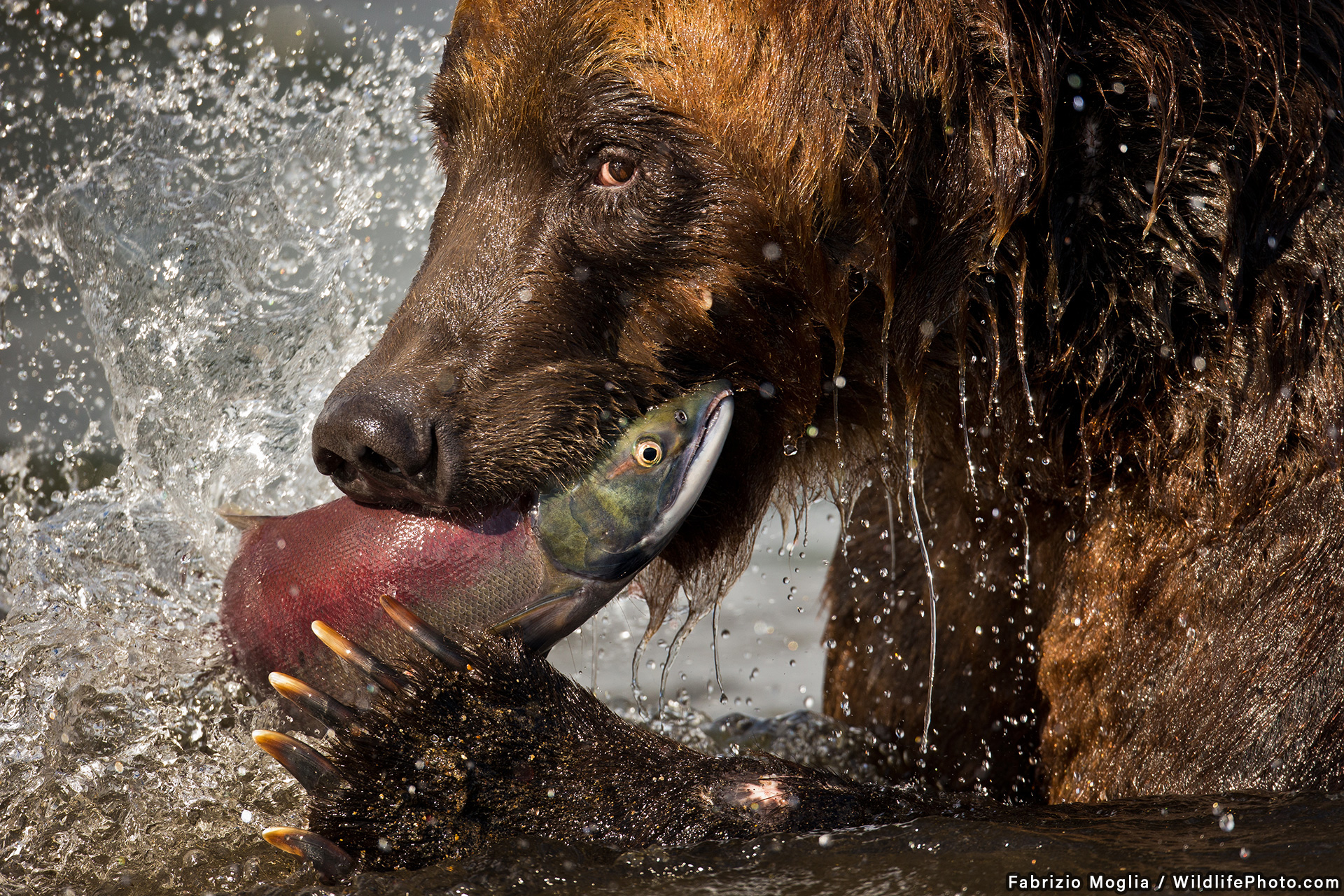
Two eyes
In a Kurile Lake (Kamchatka) I took this no crop photo from very short distance from this Ursus Arctos Beringianus feeding a Red Salmon
- Highly Commended: Anuroop Krishnan
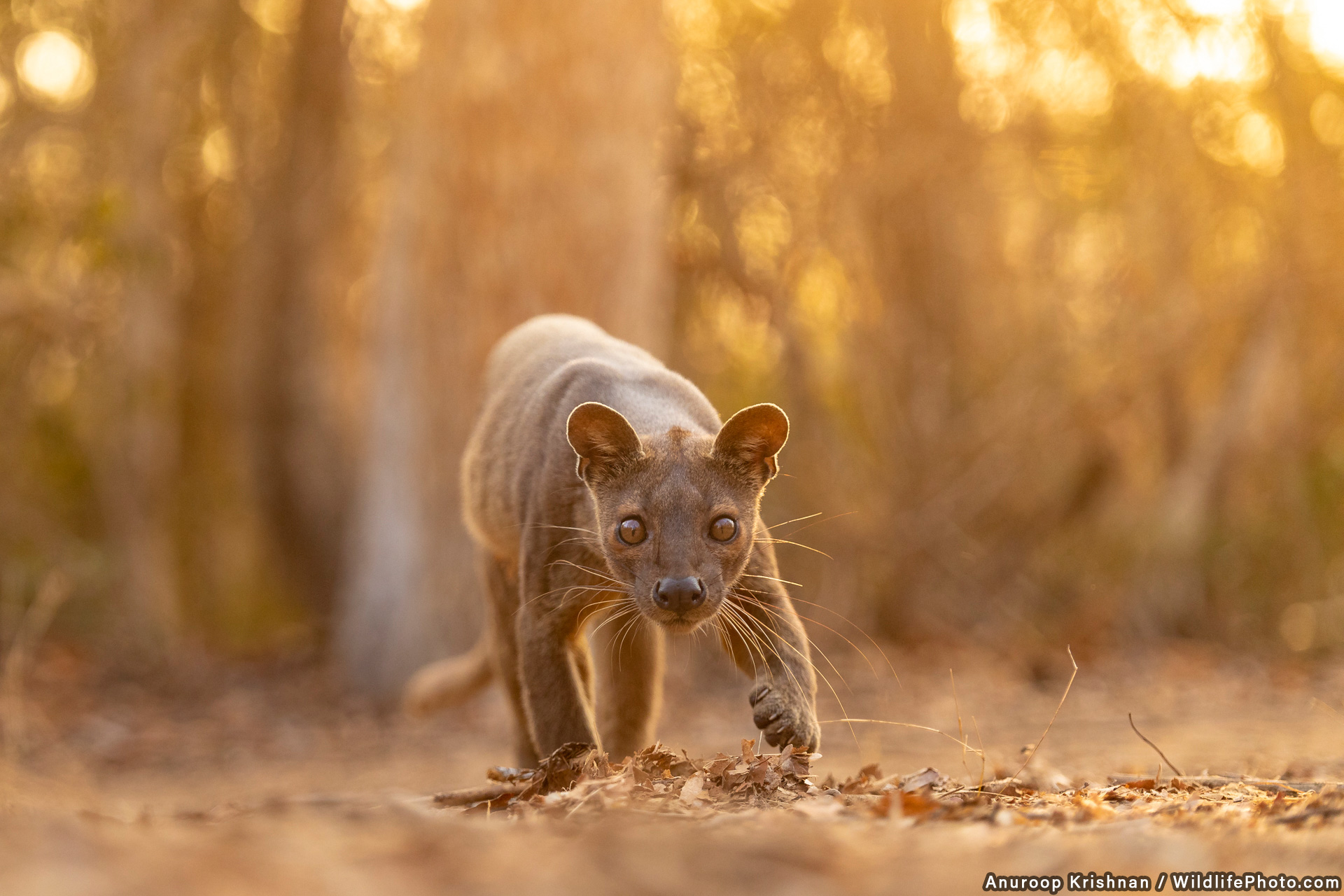
Fossa
The fossa, (Cryptoprocta ferox), is the largest predator in Madagascar, measuring over six feet from head to the tip of its tail. Though it appears to be cat, it is more closely related to mongoose and civets than it is to cats, despite many of its cat like traits. It has semi-retractable claws, and is as agile in the forest canopy as it is on the ground. Its diet consists of mostly lemurs, but it is known to eat birds and reptiles as well. It is active both during the day and the night, with activity peaking at specific intervals for finding food and socializing. This behaviour is called ‘cathemerality’. Around Kirindy, where we photographed this, fossas were active at dawn, for an hour or so. Interestingly, the fossa is one of the most widespread animals in Madagascar, found across the island. Based in its distribution, it seems to prefer pristine undisturbed forest habitat than degraded forests. Interestingly, while fossa is it’s Malagasy name, the genus fossa consists of animals such as the Malagasy Civet. The fossa was then classified separately under another genus, Cryptoprocta. The image copyright is shared between me and another photographer, Sumeet Moghe
- Highly Commended: Lucia Drietomská
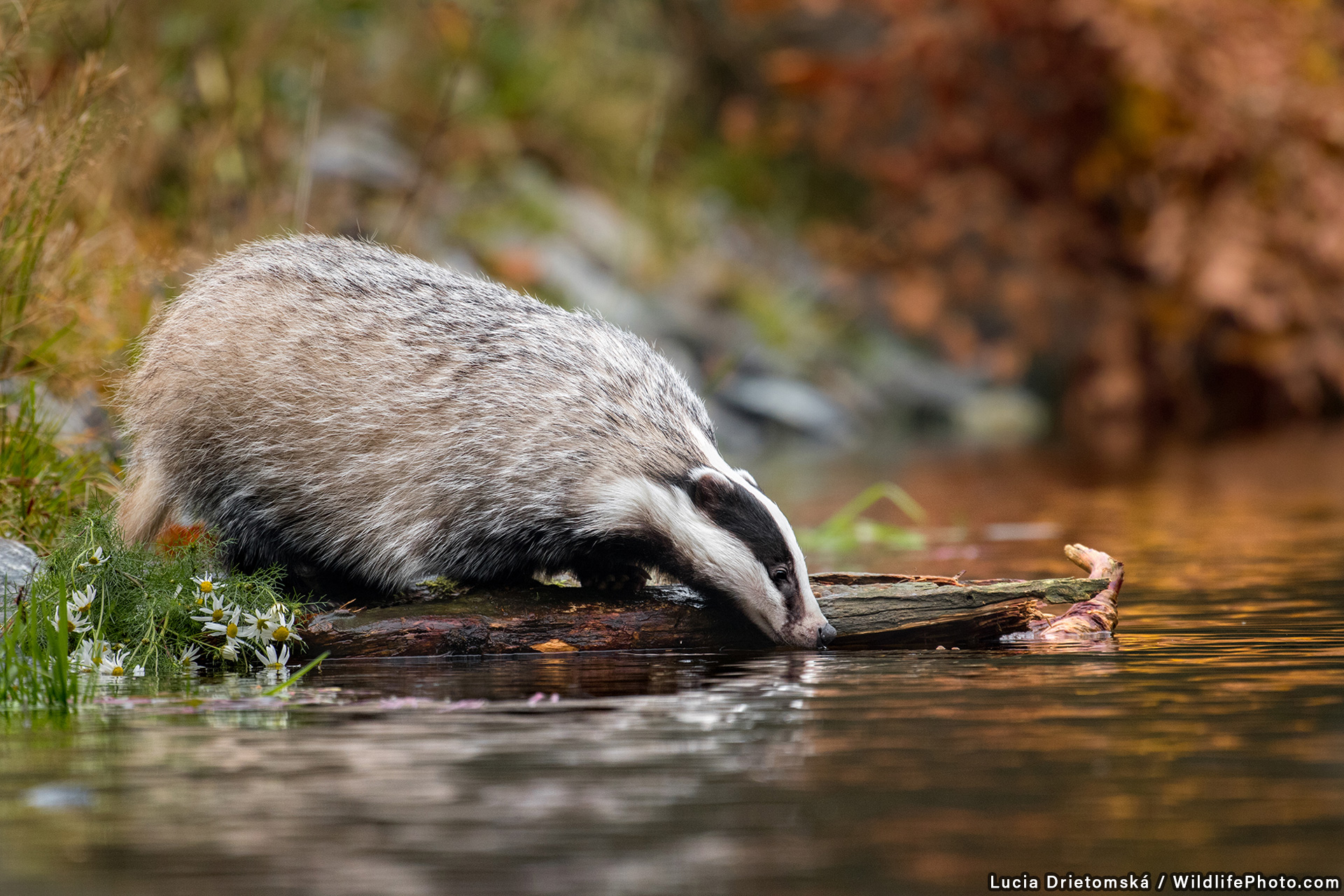
Drinking badger
It was last year trip after summer (it was start of autumn) with my photo friends when we saw this beauty badger, how was walking to water. This photo was taken in captive conditions.
- Highly Commended: Lucia Drietomská
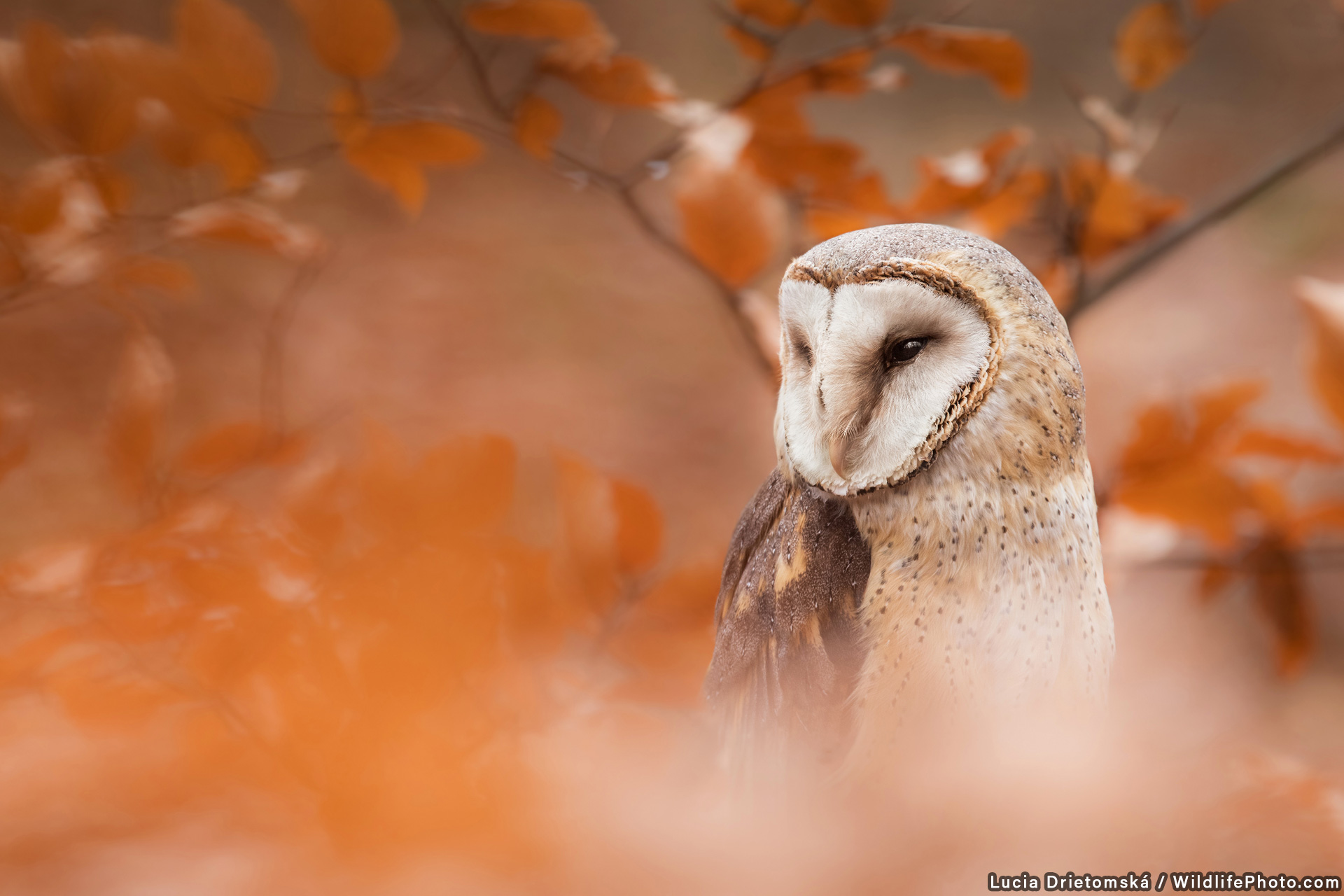
Autumn owl
Really beauty owl Tyto Alba from our Slovakia woods. It was amazing to see her in that autumn leaves. This photo was taken in captive conditions.
- Highly Commended: Dupouy Myriam
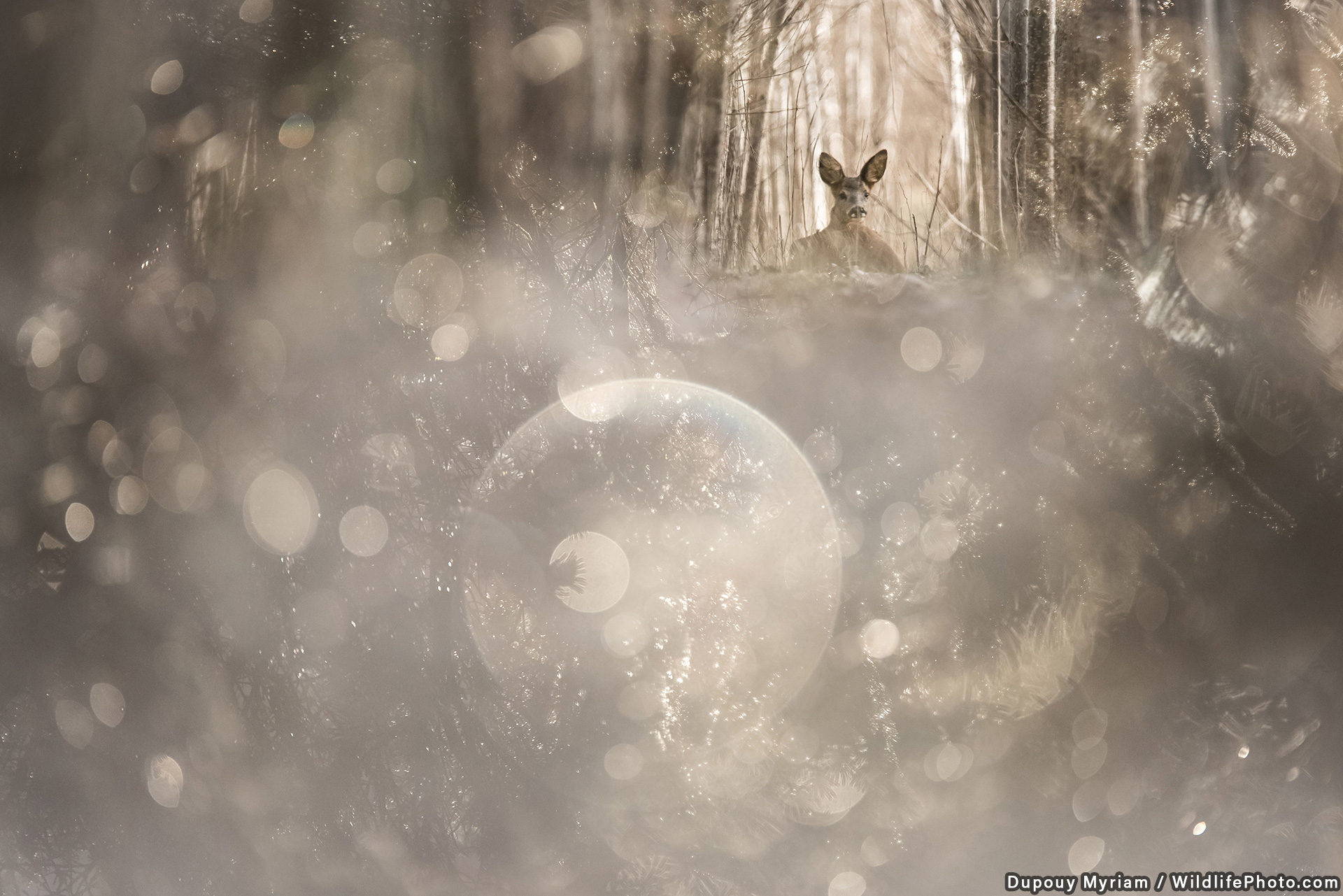
The Secret Garden
I have been working on this particular Project for quite a while now and it fulfills me so much it sometimes seems I could go on for ever. It gave birth this year to my first book and it's a real pleasure to see 5 or 6 years of work come to live together. My aim is to show local and would be common species people tend to forget about or ignore in order to arise awareness of nature’s beauty, fragility and definite need for attention. However, it’s nothing exceptional since I’m pretty sure this is what all the Nature and Wildlife Photographers intend to do. The thing is we sometimes focus on exotic species to speak about problems regarding environment and preservation (although of course I would love to travel and to do that too since there are so many causes dear to my heart) but then it should start with the treasures we have at hand. I’ve chosen to share the feelings I experience and let the poetry and the magic speak and to do so, I’ve chosen to widely use an old technique I dig, that is to say Multiple Exposure. This particular technique enables me to add what my mind and my heart see and live to what my eyes see. It also enables me to encompass everything I experience at a precise moment in one single image. It’s my story-teller tool, my feather and my jewel… When I was little, our camera had quite a will of its own and would sometimes dictate multiple exposure photos and I remember how much I loved them and how much the always caught more than what we thought they would. Therefore, later, it was important for me to master this technique and use it as an invitation to my world although I really don’t want it to alter reality, I just want it to vehicle mine for I feel our photos are always the mirrors of our own realities. It’s ever so important to show horrors to open people’s eyes and exort them to act but I’m also sure that when people are encouraged to dream and encompass the beauty of what they don’t pay attention to, they’ll be more inclined to preserve this beauty and feel concerned about it. For this photo I first took a picture of rain drops in a fir tree, playing with light and flares and I then entered the forest as I knew I’d find snowdrops there and wanted to magnify them using my first photo. However, what I had not expected was to find the gardian of my secret garden fast asleep and this encounter was so just wonderful and soothing this is what I wanted my photo to tell. On a technical point of view, for the second photo, I’m lying on the floor to make sure I have a rather important blurred part to let the rain drop flares come into action and only a tiny keyhole showing the gardian to the secret garden. Exact location : France, Nogent-sur-vernisson, Loiret.
- Highly Commended: Dave Shaffer

Safe and Sound
These cubs know there is no place better or safer in the world than right by mom's side .
- Highly Commended: Gustavo Gonçalves
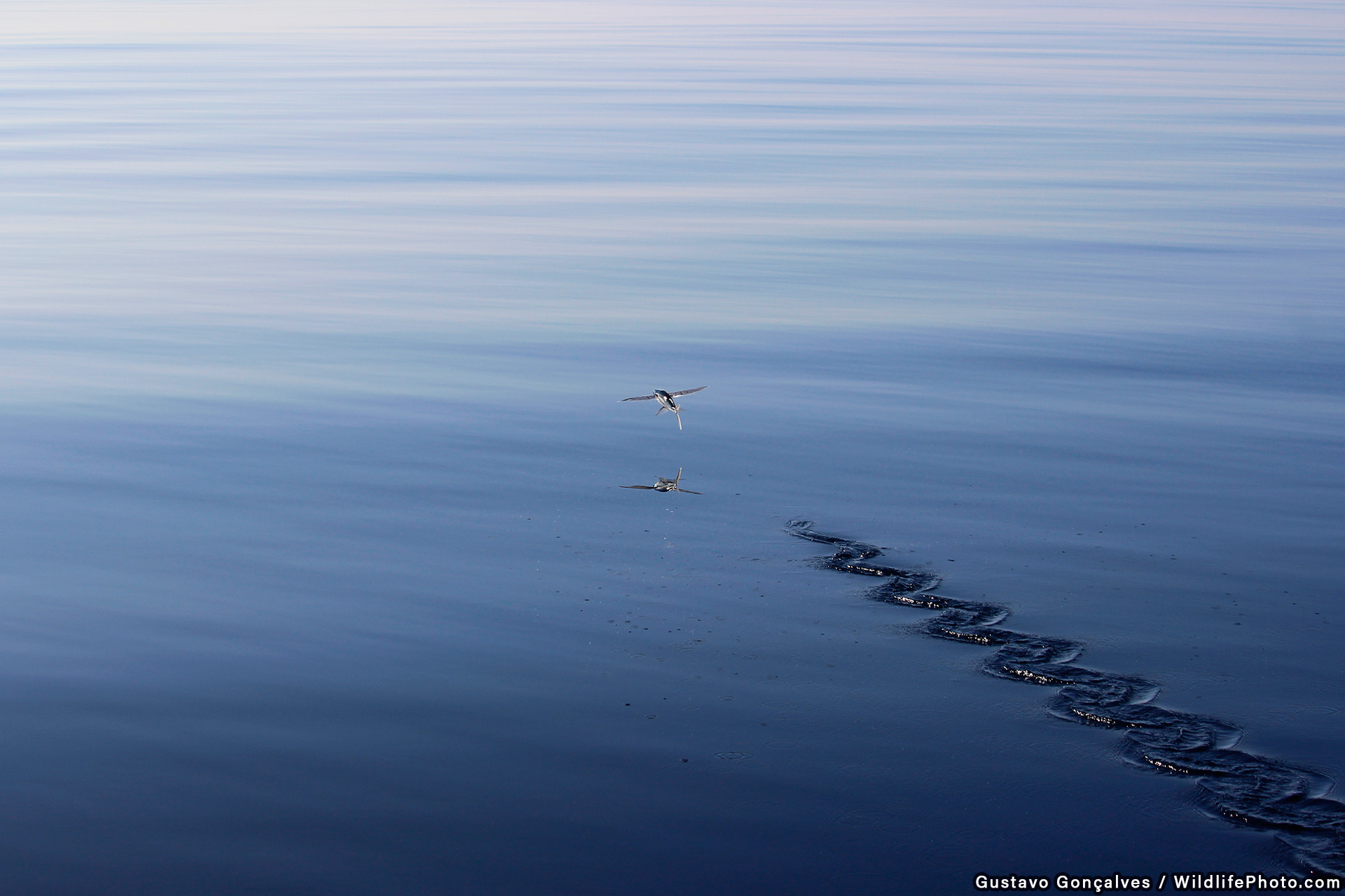
FLYING PATH
The flying fish is a very surprising species, it appears when no one expect, leaving a mazing track most of times. This fish is common but intriguing at the same time, because it moves under and above the water. Not a easy catch for photography it steal doing his magic and graceful moves... This picture was take in the boat on moves in the Indic ocean.
- Highly Commended: Sebastian Di Domenico

White Tipped Sicklebill
During a night hike down the streams of the Sumaco National Park I found many sleeping hummingbirds close to the waterfalls. One of those species really got my attention due to its bizarre looks! It turns out it was a White-Tipped Sicklebill (Eutoxeres aquila aquila). After a couple of shots it woke up and allowed me to take this picture which I found really interesting due to the small mites that crawled up its bill.
- Highly Commended: Alice Buckley
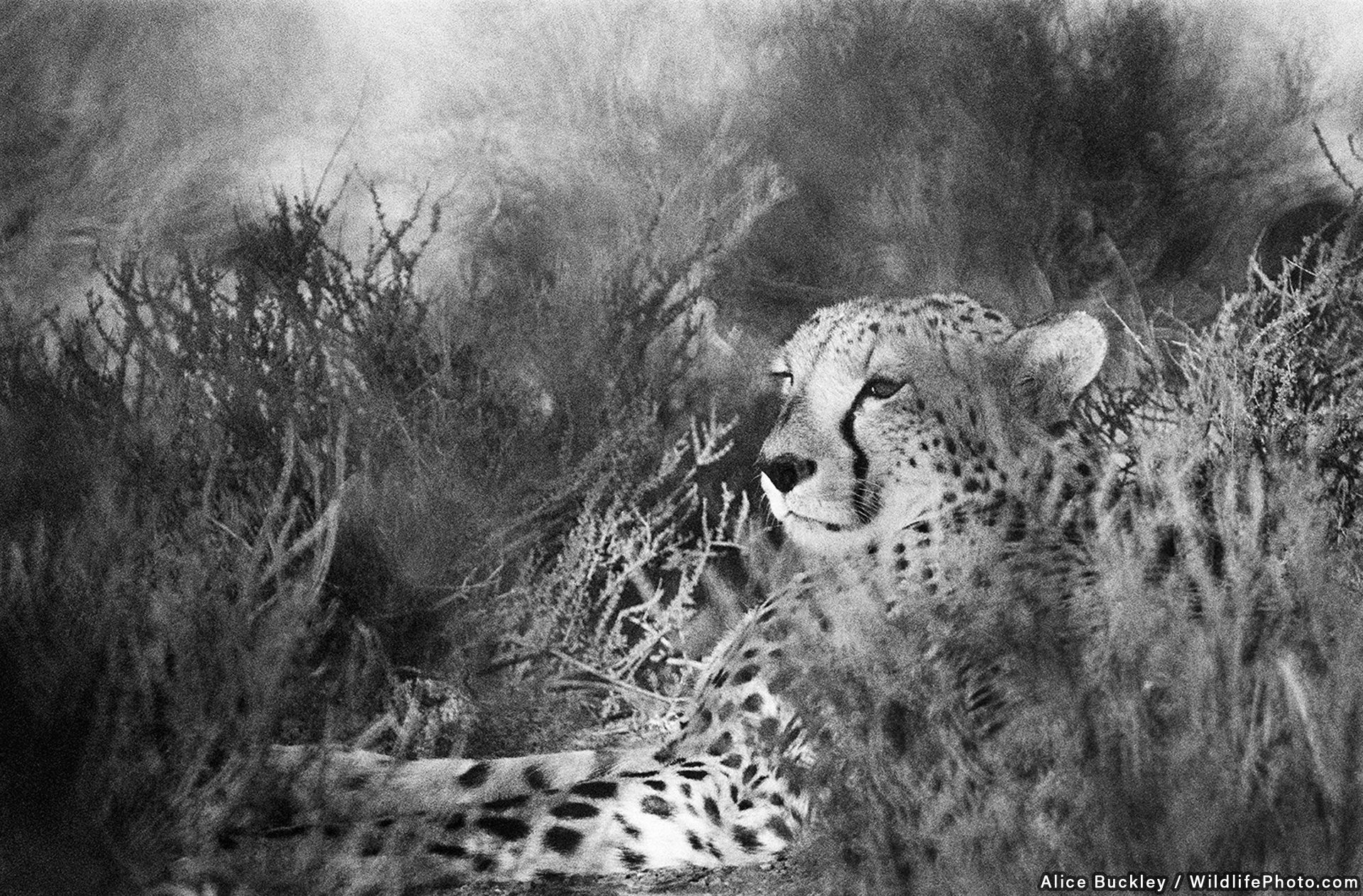
Sibella
Sibella was a cheetah who nearly lost her life to hunters. After intense rehabilitation, she was re-released into Samara Private Game Reserve - becoming the first wild cheetah to be back in the Karoo in 125 years. Sibella went on to successfully rear numerous litters, contributing to 3% of the wild cheetah population in South Africa, before her death last year due to injuries sustained from a hunt. She was approximately 14 years old.
- Highly Commended: Phil Croucher
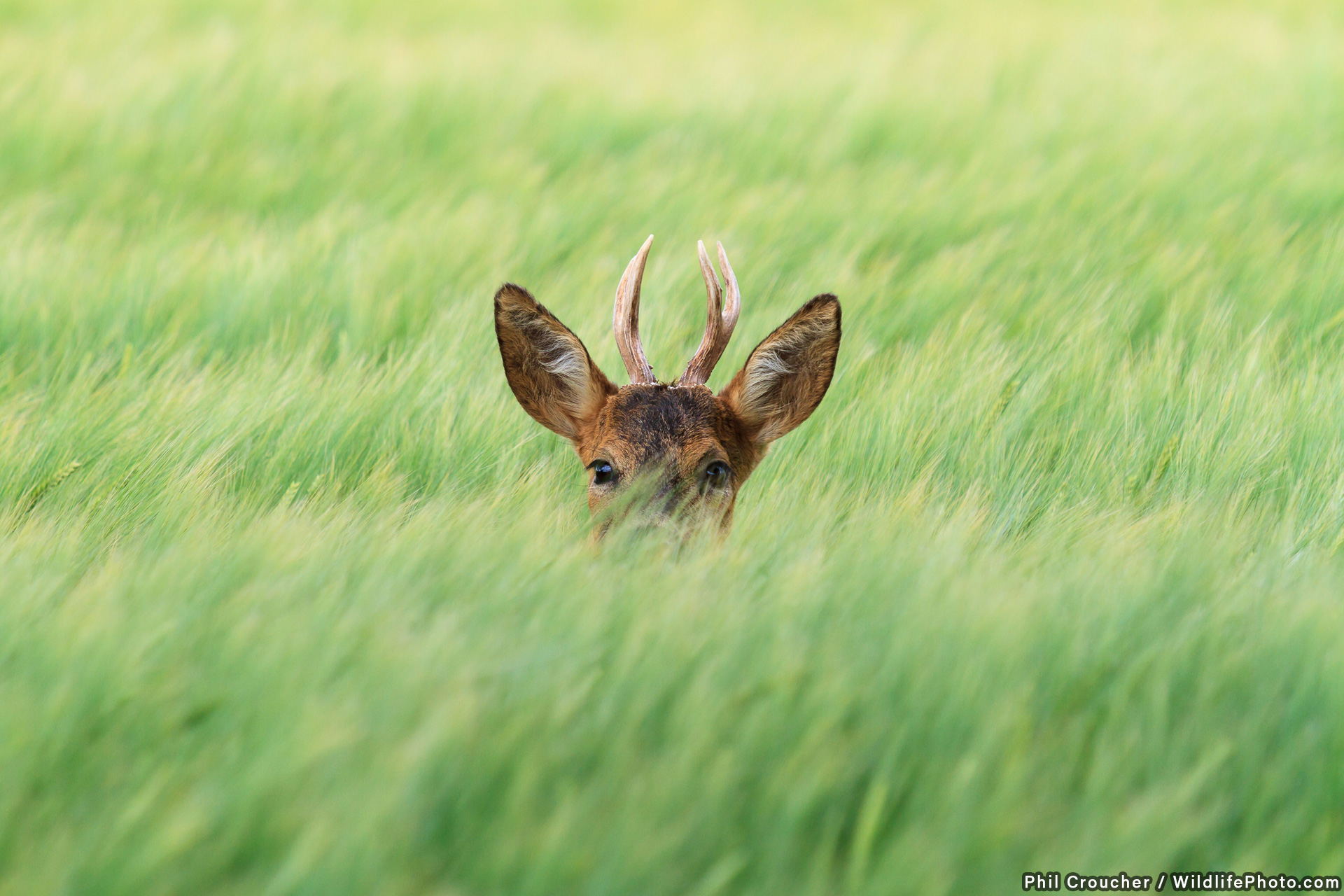
Watching me watching you
A Roe buck in a corn field.
Congratulations to the featured photographers and a big thank you to all who entered! Thank you also to the generous support of our contest sponsors:

